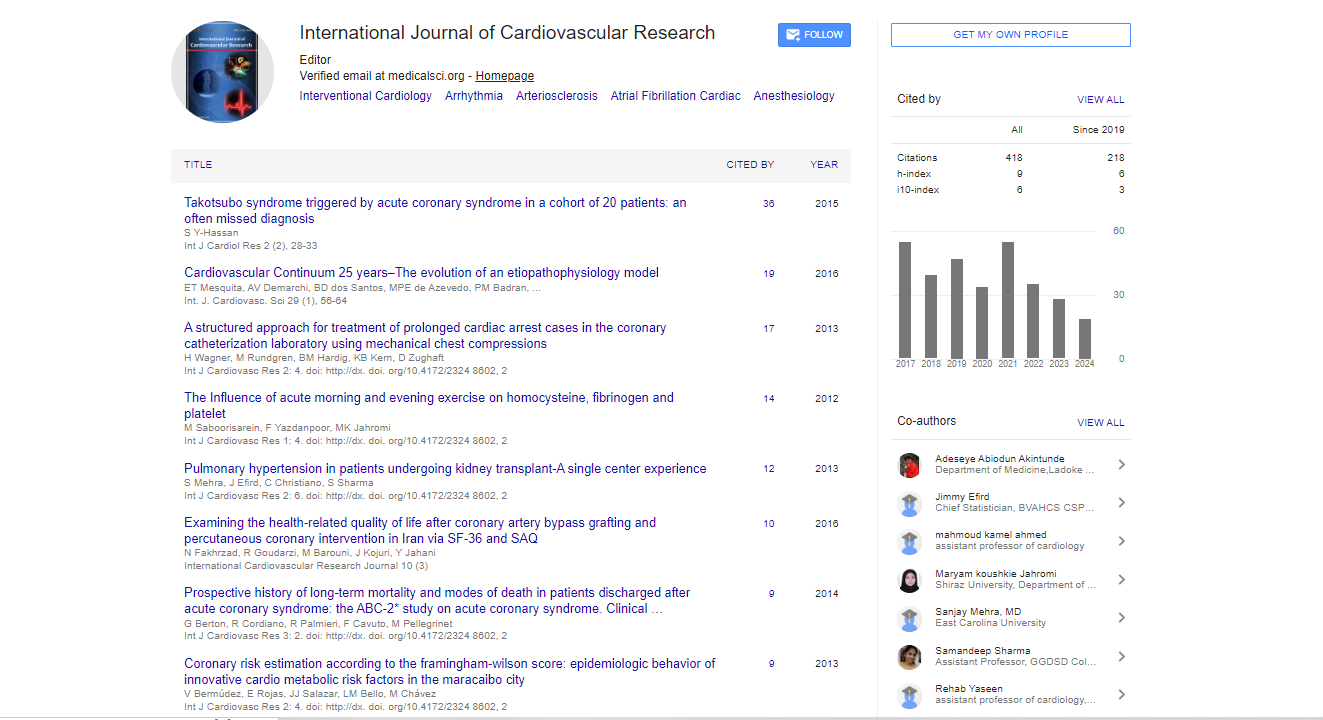Research Article, Int J Cardiovas Res Vol: 6 Issue: 2
Higher Incidence of Acute Aortic Dissections in Winter Months- Results of the German Registry for Acute Aortic Dissection Type A
| Mehmet Oezkur1*, Ernst Weigang2, Armin Gorski1, Atilla Magyar1, Marcus Leistner1, Isabell Hoffmann3, Maria Blettner3 and Rainer Leyh1 | |
| 1Department of Cardiovascular Surgery, University Hospital Würzburg, Germany | |
| 2Department of Vascular Surgery and Endovascular Therapy, Academic Hospital Hubertus Berlin, Germany | |
| 3Institute of Medical Biostatistics, Epidemiology and Informatics University of Mainz, Germany | |
| Corresponding author : Mehmet Oezkur Department of Cardiovascular Surgery, University Hospital W├?┬╝rzburg, Oberd├?┬╝rrbacherstrasse 6, 97080 W├?┬╝rzburg, Germany Tel: +49 931 201 33046 Fax: +49 931 201 33009 E-mail: Oezkur_m@ukw.de |
|
| Received: February 24, 2017 Accepted: March 22, 2017 Published: March 30, 2017 | |
| Citation: Oezkur M, Weigang E, Gorski A, Magyar A, Leistner M, et al. (2017) Higher Incidence of Acute Aortic Dissections in Winter Months- Results of the German Registry for Acute Aortic Dissection Type A. Int J Cardiovasc Res 6:2. doi: 10.4172/2324-8602.1000303 |
Abstract
Background: Most cardiovascular events have their peak during the cold winter months. Especially for myocardial infarctions the accumulation is already well described. Several studies have investigated the incidence of acute aortic dissections (AAD) but a seasonal increase of AADs could not be shown yet due to the limited power of these studies. Therefore, we investigated the German Registry for Acute Aortic Dissection Type A (GERAADA) data for seasonal accumulations. Methods: All 2137 patients who have been registered in GERAADA from 7/2006 to 6/2010, which is a prospective, multi-centre registry of the German Society of Thoracic and Cardiovascular Surgery, have been analysed. The incidences per year, quarter, season and month were investigated considering covariates such as age, gender and etiology using poisson regression. Results: The distribution of the incidences differed significantly between the quarters. More patients were treated in quarters IV and I (p=0.002). In the months October-February there were more cases than in the rest of the year (p=0.017). Although age, gender, the underlying disease (p<0.001) as well as arterial hypertension had an impact on the incidence of AADs (p=0.005), the distribution on the quarters was not influenced by these variables (Poisson regression p>0.5). Conclusions: Our data show that there is a peak of surgically treated AADs within German speaking Europe during winter months independent from patient related factors and the aetiology of the AAD.
 Spanish
Spanish  Chinese
Chinese  Russian
Russian  German
German  French
French  Japanese
Japanese  Portuguese
Portuguese  Hindi
Hindi 



